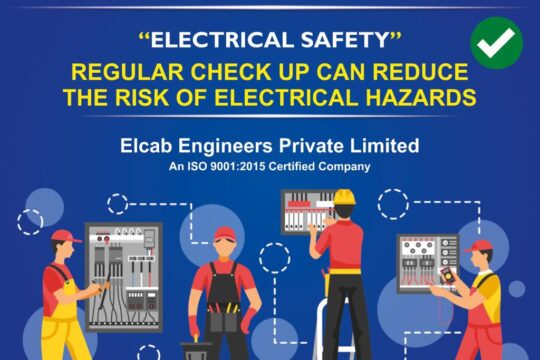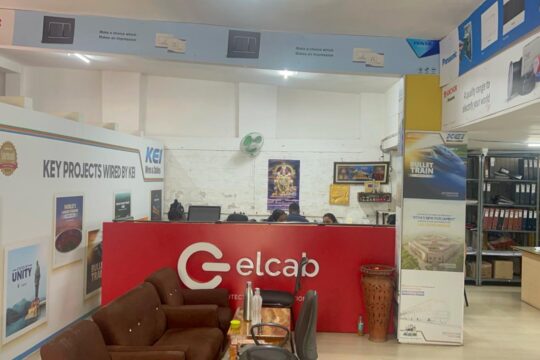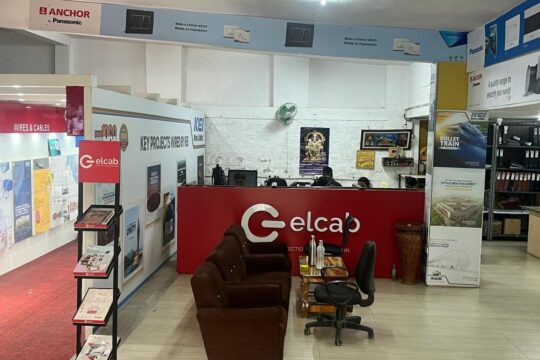Things you should know about indoor and outdoor wires
Elcab Engineers: Finolex Wire Distributor In Bangalore Karnataka: Both indoor and outdoor wiring are important for all buildings. Though indoor and outdoor wires share some similarities, they have notable differences. Different safety rules apply to outdoor and indoor wiring, and different materials are used based on the use. When you are buying wires for your building, you should use the right ones made for indoor and outdoor purposes. So, find a Finolex Wire Distributor in Bangalore Karnataka to help select the right electrical wire or cable for your project.
They provide a large selection of wires and cables for various wiring purposes. If you are new to wiring, read this article to learn about indoor and outdoor wires. When a wire is used incorrectly, it can be a serious mistake that results in broken wiring, serious safety hazards, and malfunctioning devices.
What separates indoor and outdoor wires?
While there are certain differences between indoor and outdoor wiring, improved weather resistance is the main goal of outdoor wiring. Indoor cables don’t have the same exposure to elements and danger and don’t need to be as durable. High-quality indoor wires are affordable at any reliable Finolex Wire Distributor In Bangalore Karnataka. You can also use outdoor wires indoors if you use conduit or direct-burial wire installations.
The following are some features that differ between indoor and outdoor wires:
Insulation:
Outdoor wires need to withstand humidity, dampness, and fluctuating temperatures. These can be quite cold temperatures in many places, so exterior cables come with thick insulation to shield the wires inside. This can seem like they look thicker, but the extra shielding helps protect the inner wires from the weather.
Plug style:
Indoor plugs may have two or three prongs, depending on the product. Many indoor items, such as lamps and chargers, use two-pronged plugs. But more powerful devices typically use three-pronged plugs due to the increased safety of the ground. Although they don’t provide a ground check, they are somewhat easier to deal with. However, a ground prong will always be present in outdoor cables.
Gauge:
Indoor wires don’t necessarily need to be as big as outdoor wires because they won’t be pulling as much electricity and are frequently shorter. So, visit a Finolex Wire Distributor In Bangalore Karnataka, to buy genuine indoor wires that have smaller diameters.
Power use:
The amount of power that devices consume varies greatly, and low-amperage devices frequently come with indoor wiring. A hairdryer or washing machine draws approximately ten amps, although an ordinary household lamp or television may consume only 0.5 amps.
On the other hand, outdoor appliances like power tools and big light fixtures may need a lot more electricity. You would need an outdoor outlet and wire to carry that electricity because power tools like air compressors and routers may use up to 18 amps.
Electric code requirements:
There are different electric codes for different countries and areas. To guarantee safety and compliance, you must use the proper cable type according to the electric code’s specified applications and installation standards. Different protective features are rated for indoor and outdoor cables, so talk to a Finolex Wire Distributor In Bangalore Karnataka, to buy the right type of wire for your wiring work.
What type of wire should you use indoors?
You can use less expensive or less durable indoor wires or cables if you’re not working outside. They probably have flame ratings specified for the use, although they usually don’t require the same level of protection as outdoor wires. These cables typically consist of a hot, neutral, and ground wire and are non-metallic. An unsheathed wire is an additional choice; however, if it passes through open places, it must be protected by conduit.
Some widely used types of indoor purpose wire include the following.
NM-B:
Finolex wire is widely used for branch circuit wiring in homes and small businesses and comes in various designs. It even has a unique jacket that makes dragging it through conduit simple. This cable, which comes in AWG sizes 14 to 8, has a nylon jacket and PVC insulation and can withstand temperatures of up to 90 degrees Celsius in dry settings. With less protection, it resembles UF-B cable quite a bit.
THHN and THWN:
THHN and THWN wires are part of the Type MC wires used in buildings and these can be used independently within a conduit. These cables come with multiple colored sheathings and are labeled as hot, ground, or neutral cables. Typically, they supply electricity to all of the outlets in the house from an electrical box. You can also buy THHN and THWN cables in large gauges from a Finolex Wire Distributor In Bangalore Karnataka, for more demanding power usage.
Low-voltage wire:
Other low-voltage wires, such as speaker and thermostat wires, are available for specific interior uses. Generally speaking, they are insulated and have very modest sizes; however, depending on the type of wire, requirements might vary greatly.
It is frequently more affordable because indoor wire requires fewer sophisticated protective materials. Consider using outdoor cables if your project requires this degree of protection, such as in damp or extremely cold environments. Always buy from a reputed Finolex Wire Distributor In Bangalore Karnataka, if you want genuine wires that are quality rated.
What type of Finolex wire should you use for outdoor purposes?
Electricity is important for the outdoor areas, too. Like indoor wiring, outdoor wiring has some constraints, too. The first step in selecting outdoor wires is picking the right ones based on the application and the resistance needed to handle the dangers in the surroundings. It’s more likely that you’ll have to consider a cable rather than a wire. Multiple conductors covered in a protective covering and a ground wire can be found in cables.
Protection
The majority of installations require protection from extremely cold temperatures. This might or might not be a problem, depending on the climate. For example, you may often have to cope with below-freezing conditions when installing a wire in a northern outdoor location. On the other hand, you can get warm weather in tropical regions. Ensure that the cables are quality tested when you buy them from a Finolex Wire Distributor In Bangalore Karnataka.
Natural elements
Condensation, humidity, wetness, and UV radiation are hazards that practically any outside cable must contend with. Moisture can quickly render a cable inoperable, causing it to perform poorly and destroying the signal. In contrast, UV light causes the outer layers to break down when a wire is exposed to sunshine. When this occurs, the cable’s lifespan is greatly reduced, and sheath breaches may expose the wire to other substances like water.
Even UV-protected cables have the potential to lose color. So, you should buy high-quality color-coded cables from a reputed Finolex Wire Distributor In Bangalore Karnataka, if you want cable identification to be easier in the future.
You’ll also need to consider the existence of materials like chemicals, oil, solvents, and fuels in some places, such as industrial settings. They must be protected, as they can eat away at a cable’s coating and corrode it to the wire.
Some popular outdoor cables include the following.
Type UF-B:
Underground feeder cables, as the name implies, are always suitable for applications requiring direct burial without conduit. The ‘B’ in this cable’s name stands for branch circuit. You can also use this wire indoors for corrosion or moisture protection. This type of cable has a PVC jacket and nylon and PVC insulation that is color-coded. Either stranded or annealed soft bare copper wire is used as conductors for this wire with a bare copper ground. They support up to 90 degrees Celsius in both dry and wet conditions and are available in wire gauge sizes 6 to 14.
Type MC:
Type MC cables are another kind of indoor or outdoor cable. They have either the water-resistant THWN-2 version or THHN (thermoplastic, high heat, and nylon jacket) insulation. These insulations are necessary for many outdoor applications, especially heat and moisture. The aluminum interlocking armor envelops the THHN/THWN-2 wires, contributing to reliable performance in challenging settings. Type MC cables are available in AWG 14–2 solid, stranded, and bare copper variants. Type MC wires are suitable for both above-ground and underground usage.
SE-R:
SE-R cables are round-shaped service entry cables. Although they have a ground wire and a PVC jacket, they use THHN insulation, too. Flame, water, and sunlight-resistant SE-R cables are available at any Finolex Wire Distributor In Bangalore Karnataka, for affordable prices. SE-R can be used in a conduit even though it is unsuitable for direct burial. It comes in AWG 6 to 4/0 and can operate in damp and dry environments up to 90 degrees Celsius.
USE-2:
USE-2 offers the required durability if you build up an outside solar project. They defend against extreme heat, moist or humid conditions, UV radiation, abrasion, pressure, and chemicals. They are made of flexible rubber insulation and copper or aluminum wire. The temperature ratings of these wires can be as high as 90 degrees Celsius and support 600 volts.
Final thoughts
Remember that a reliable Finolex Wire Distributor In Bangalore Karnataka can help you choose the right wire type for your wiring project. So, after clearly deciding the goals of your wiring project, contact a reliable wire dealer in Bangalore.




